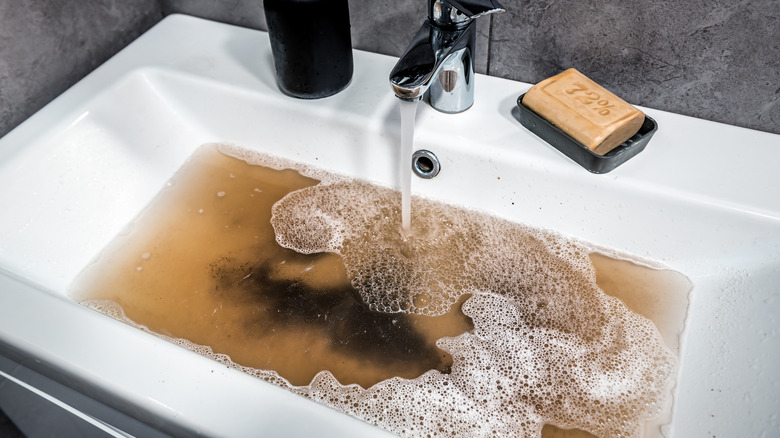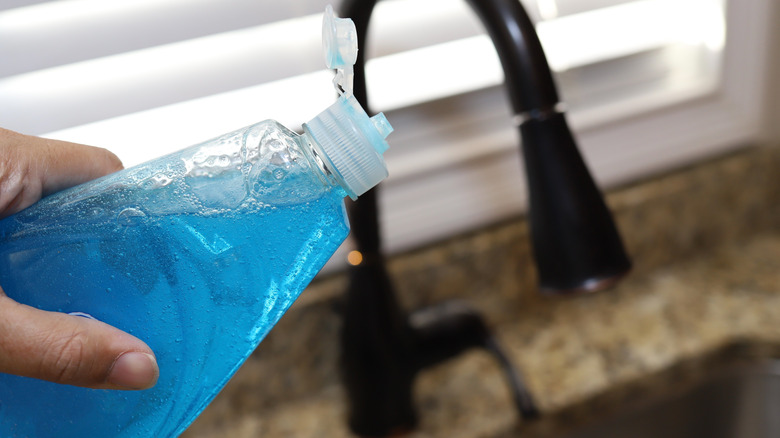Why Dish Soap Is Your Unexpected Secret Weapon For Clogged Drains
A clogged drain can be a major headache. It can be caused by various things, including a buildup of food, grease, soap scum, minerals, toothpaste, and more. If you don't have the proper equipment to get rid of a backup, you'll have to head to the store, which just adds more stress to the situation. But what if we told you that you likely already have the solution you need right at home?
Surprisingly, dish soap can be your savior when you notice that the water isn't flowing quickly down the drain. The reason why it works is because it typically contains lye. This compound, which is usually found in drain cleaners, has the ability to dissolve materials like hair and grease. When looking at the ingredients list on your soap bottle, lye will usually show up as sodium hydroxide (a common household item that can unclog drains). However, dish cleaner alone won't do the job — you also need to throw some boiling water into the mix. Here's how to flush the build-up away.
How to use dish soap to unclog drains
Start by removing any water or materials that may be obstructing the drain. Then, pour a generous amount of dish soap down the pipe and wait a few minutes to allow the mixture to soak into the clogged material. Next, boil a kettle of water — about 1.7 liters — and gently pour it down the drain to disperse and push down the build-up. Depending on the severity of the clog, this may not work the first time. If water is still moving down your drain slowly, repeat the process, but make sure to allow the dish soap to sit for about 30 minutes before pouring down the boiling water again.
If the clog is still not gone after two attempts, it may be too severe for a DIY unclogging method. At this point, it may be best to contact a professional plumber to avoid making the situation worse. And maybe brush up on the things to consider if you want to avoid a clogged drain.


